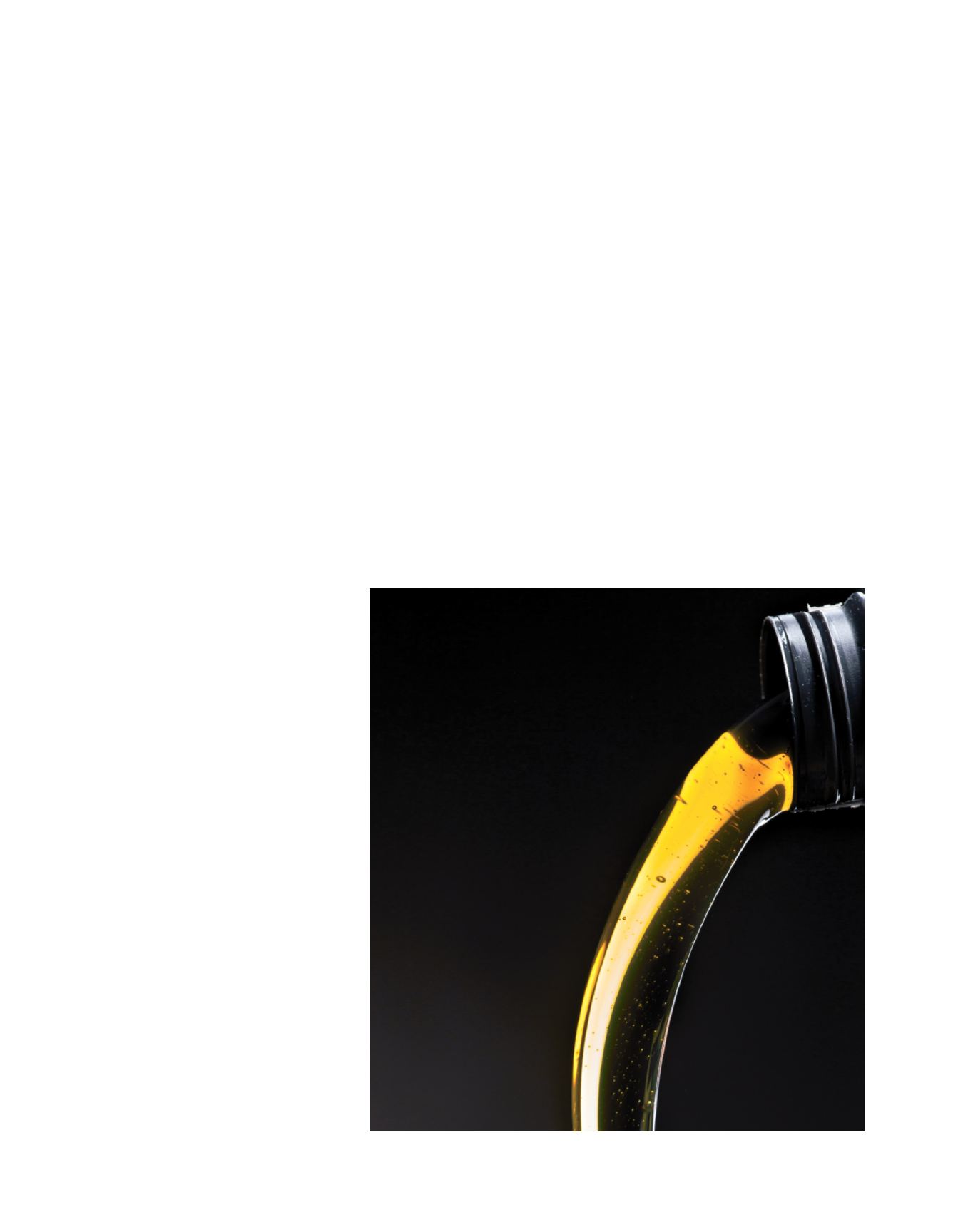
45
Fuels & Lubes International Quarter Two 2016
ers. According to Arcy, one of
the least understood aspects of
this category is the fact that it’s
actually split into two, which is
unprecedented. CK-4 is backward
compatible, as evidenced by the
fact that its name follows that of
the current category, API CJ-4.
FA-4 will offer additional fuel
economy benefits and will apply
to oils with lower high tempera-
ture, high shear (HTHS) viscosity,
and engines that are meant to be
lubricated with them. Thus, API
FA-4 oils will only have limited
backward compatibility.
Most consumers don’t under-
stand why API created two cate-
gories in the first place, he said.
This is because most consumers
understand viscosity in terms of
SAE viscosity grades, as defined
in SAEJ300 (Engine Oil Viscosi-
ty Classification). SAE viscosity
grades go under broad names,
such as SAE 30 or 40, each
spanning a range of viscosities
measured in centistokes. HTHS
viscosity is measured in centi-
poise (cP) or millipascals times
seconds.
Because of these different ways
of measuring viscosity, customers
who usually buy SAE 30 oils will
have a choice between API CK-4
and FA-4, since both are available
as SAE 30. Arcy offers this helpful
analogy: a freshman and a senior
are both high school students, but
they are very different in terms of
maturity.
Aside from oil marketers qual-
ifying their oils, there are a few
tasks left before API CK-4 and
FA-4 reach their first license date
of December 1, 2016. API is work-
ing on options to package and
market oils under the new cat-
egory, which poses a new chal-
lenge due to the two categories.
The API “donut” is the circular
symbol that displays the perfor-
mance category and SAE viscosity
grade on bottles of API-licensed
oils. Typically, the top part of the
影响。Arcy说,这个类别最不为人们了解的地
方它实际上分为二个,这是之前从未出现过
的情况。CK-4是向后兼容的,其命名遵循了目
前类别的命名规则,API CJ-4。FA-4则可以额
外提高燃料经济性,适用于低HTHS粘度的
油品,以及以此类油品为润滑剂的发动机。因
此,FA-4油的向后兼容性有限。
大部分消费者不理解为什么API要一下子建
立两个类别,他说。这是因为大多数消费者理
解的粘度是SAE粘度等级(由SAE J300,发动
机油粘度分类定义)。SAE粘度等级有许多名
字,如SAE 30或40,每一种都覆盖一定的粘度
范围(单位为厘沲)。而HTHS粘度的单位则是
厘泊(cP)或mP•s。
由于不同的粘度测量方法,通常购买SAE 30
油品的人可以选择API CK-4和FA-4,因为这两
者都有SAE 30规格。Arcy打了一个比方:初一
学生和高一学生都是中学生,但他们的成熟度
非常不同。
除了油品生产商要使他们的油品合格以外,
在2016年12月1日颁发第一张许可之前,API
CK-4和FA-4还有许多事要做。API正在研究新
类别的包装和销售方案,由于同时存在两个类
donut displays the performance
standard. Arcy said that the API
is considering ways to make the
performance category stand out
more, so that customers will
notice the difference between the
two categories. So far, a decision
hasn’t been reached on what the
donut will look like, but using co-
lour might be an option, he said.
API has contracted a public re-
lations firm to survey drivers and
fleet owners to gauge the public’s
knowledge of performance cat-
egories, and to understand what
people look for when selecting
oils. So far, they’ve found that
most people look for two things:
the brand name and the SAE
viscosity grade. Arcy said the goal
is to get people to take one more
step and include performance
category in their considerations.
“You need to take that extra
step to define the performance


